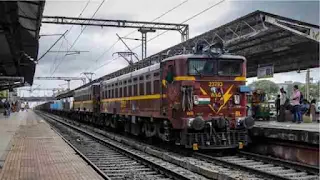Introduction
Indian Railways is the lifeline of transportation in India, catering to millions of passengers every day. It is not only one of the largest rail networks in the world but also a significant contributor to the country's economy. Understanding how Indian Railways generates revenue from passengers is essential to grasp the functioning of this vast system.
Revenue Sources from Passengers
1. Ticket Fares: The most obvious source of revenue for Indian Railways is the money passengers pay for their tickets. When you book a train journey, a portion of the fare goes to Indian Railways. The fare varies depending on factors like the distance you're traveling and the class you choose, whether it's sleeper, AC, or executive class.
2. Reserved Passenger Segment: Many passengers prefer to book their seats or berths in advance, especially for long-distance journeys. Indian Railways earns a significant portion of its revenue from these reserved seats and berths. This revenue has been steadily increasing over the years, showing the popularity of reserved travel options.
3. Unreserved Tickets: Not everyone books their tickets in advance. Many people, especially for shorter journeys or daily commutes, buy unreserved tickets. These tickets are generally cheaper and are a crucial source of revenue for Indian Railways.
4. Platform Tickets: Have you ever noticed people standing near the entrance of railway stations, but they're not boarding any trains? They might have bought platform tickets. These tickets allow people access to railway platforms without traveling. The small fee they pay for these tickets also contributes to Indian Railways' revenue.
5. Parcel and Luggage Services: Indian Railways doesn't just transport people; it also moves goods and luggage. If you're sending a parcel or carrying excess luggage on a train, you pay a fee for that service. This adds to Indian Railways' revenue stream.
6. Catering and Ancillary Services: When you're on a long train journey, you might buy food and beverages from the pantry car or station vendors. Indian Railways earns money from these catering services. Additionally, they offer various other services like retiring rooms, waiting halls, and cloakrooms, all of which generate revenue.
Why No Per-Seat or Ticket Charge System?
Now, you might wonder why Indian Railways doesn't have a system where you pay for each seat or ticket separately. Here's why:
1. Complexity: Indian Railways operates on an extensive network, with thousands of trains running on various routes every day. Implementing a per-seat or ticket charge system would require a massive overhaul of the existing infrastructure, including ticketing systems and fare calculation methods.
2. Diversity of Passengers: India is a diverse country with people from different socio-economic backgrounds. The current system allows flexibility in pricing, making train travel accessible to everyone, regardless of their financial status. A per-seat system might make it difficult for some passengers to afford train travel.
3. Zonal and Route-Based Pricing: Indian Railways' fare structure is designed based on zones and routes. The fare you pay depends on factors like the distance you're traveling, the class you're traveling in, and the demand for that particular route. This system allows for more nuanced pricing adjustments compared to a flat per-seat charge.
4. Affordability and Accessibility: One of the goals of Indian Railways is to provide affordable and accessible transportation to all citizens. The current fare structure ensures that train travel remains within reach for most people, contributing to the social and economic development of the country.
Conclusion
Indian Railways relies on a variety of revenue sources from passengers to sustain its operations and continue providing essential transportation services across the country. From ticket fares to catering services, each revenue stream plays a crucial role in keeping the trains running smoothly.
While a per-seat or ticket charge system might seem simpler in theory, the current fare structure offers flexibility and accessibility to passengers from all walks of life. It's a testament to Indian Railways' commitment to serving the diverse needs of its passengers while contributing to the nation's development.




.jpg)
.jpg)

.jpg)
.jpg)
.jpg)
.jpg)
.jpg)
.jpg)
